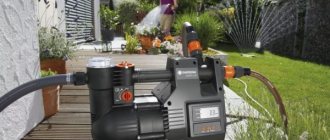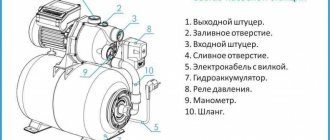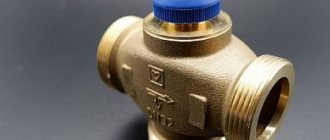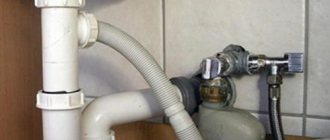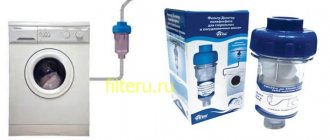A fan is one of the unnoticeable but extremely important devices that help create favorable conditions for work, relaxation and simply having a good time.
Without it, computers, refrigerators, air conditioners and other equipment will not be able to function. To ensure the most efficient operation of various devices, use a fan speed controller.
From our material you will learn about what types of regulators there are and the features of their operation. We will also tell you how to assemble the device yourself and what you will need for this.
Why can't you control the fan speed with a dimmer?
To regulate the rotation speed of single-phase electric motors with a supply voltage of 220 V, triac rotation speed controllers are used.
The dimmer (triac dimmer), in turn, is designed to control a resistive load and should be used only as a regulator of lamp brightness.
Datasheets and operating manuals usually contain instructions that it is inadmissible to use a dimmer to control the motor.
For example, the description of a 300W dimmer from Eljo (Sweden) states: inductive and capacitive loads (conventional transformers, fluorescent lamps and electric motors) cannot work with these dimmers.
Differences in control schemes:
Dimmers and triac speed controllers use similar control circuits. Both use the principle of phase control, when the moment when the triac is turned on changes relative to the transition of the mains voltage through zero. For simplicity, we usually say that the output voltage changes.
The triac regulator circuit differs from the dimmer circuit in the following ways:
· The lower threshold for the voltage supplied to the fan motor is set
· The power of the triac is selected so that its maximum operating current exceeds the operating current of the fan by at least 4 times. With a resistive load of 2 A, it is enough to take a triac also rated at 2 A.
· The fuse is selected based on the power of the electric motor. Typically, the maximum fuse current should be 20% greater than the motor operating current.
· For more correct formation of a sinusoid, an additional phase-shifting damping capacitor is installed.
An additional noise suppression capacitor is used to reduce network interference
Why is this necessary:
1. The torque of an asynchronous motor decreases in proportion to the square of the applied voltage. When the lower voltage threshold is reached, the engine may not start. For single-phase axial and duct fans, the lower value is 40-60 V.
Due to the fact that the motor is not rotating, it still consumes current, the fan windings begin to heat up. The engine begins to make a characteristic sound (hum). As a result, if the engine is not equipped with reliable internal thermal protection, it burns out within an hour.
In triac regulators, the minimum voltage supplied to the fan is set at the factory. Typically this is 80-100 V. This guarantees normal operation of the fan at low voltages.
2. When starting, the engine briefly consumes current, 6-7 times the maximum operating current (starting current). For reliable operation when starting the engine, a triac with a high operating current is used.
3. To properly protect the motor from overcurrent (overvoltage, overheating of bearings, etc.), the maximum fuse current must be selected according to the type of motor. For triac regulators, this value is 15-20% higher than the maximum motor current.
4. When a reduced voltage is applied, the engine power drops and the rotor begins to slip relative to the stator field. At certain speeds, a phase shift occurs and the engine begins to briefly consume current higher than the maximum operating current. To prevent such a situation, an additional damping capacitor and a more powerful triac are installed in the triac regulator circuit.
5. The shape of a sinusoid during phase control of an inductive load is more complex than when controlling an active load, so an additional capacitor is required to suppress the high-frequency spectrum of interference. The dimmer that controls the fan may cause interference visible on the computer or TV screen.
Often households need to install a fan speed controller. It should be noted right away that a regular dimmer for adjusting the brightness of lighting is not suitable for a fan. It is important for a modern electric motor, especially an asynchronous one, to have a correctly shaped sine wave at the input, but conventional lighting dimmers distort it quite strongly. To effectively and correctly regulate fan speed, you must:
- Use special regulators designed for fans.
- Keep in mind that only special models of asynchronous electric motors can be adjusted effectively and safely, so before purchasing, find out from the technical specifications about the possibility of adjusting the speed using the voltage reduction method.
Connecting the controller to the hood
The device is installed indoors. It is produced taking into account the recirculation of air masses to cool the internal circuits.
It is prohibited to place the regulator in an area with poor air convection, direct sunlight, or above a heating device. The operating position of the device is strictly vertical, so the generated heat will be dissipated
To install the regulator correctly, you must carefully read the instructions for the device.
Most models are designed for self-installation by the user and do not require special knowledge.
The contacts on branded products are marked, and the delivery set includes recommendations for connecting, operating, and maintaining the device. Circuits differ for different devices
Installation of wall and in-wall devices is carried out using screws and dowels, which are selected in accordance with the dimensions and weight of the device. Fastening elements are usually included in the kit, as is a wiring diagram for the fan controller.
The general pattern and sequence of actions is as follows:
The regulator is first mounted, then connected to the cable that supplies current to the fan. The wires are divided into “phase”, “zero”, “ground” and cut, connected to the input and output terminals
It is important not to confuse them and make all connections according to the instructions. The last stage is to check the size of the cross-section of the power cable and connection for compliance with the maximum permitted voltage of the device. The process of installing wall regulators is similar to the principle of connecting sockets and light switches
You can use the old fan switch seat to mount the controller. In this case, the switch must be removed
The process of installing wall regulators is similar to the principle of connecting sockets and light switches. You can use the old fan switch seat to mount the controller. In this case, the switch must be removed.
When the control module and the regulator itself are located in different housings, installation of the devices is complicated. The control unit is powered from the electrical panel, and the executive module is connected via a low-current wireIf the controller has thermal contacts, it is recommended to connect it to motors with external thermal protection contacts connected to the TK terminals of the regulator. This circuit will reliably protect the main device.
When the thermal contacts open due to overheating, the controller circuit is broken, the engine immediately stops and the warning light comes on.
A motor without thermal contacts requires the installation of separate thermal protection. Additionally, a jumper on the TC can be added to the circuit, but the rated current of the regulator must be 20% greater than the maximum motor current.
Methods for adjusting the rotation speed of household fans
There are quite a few different ways to adjust the fan speed, but only two of them are practically used at home. In any case, you can only reduce the engine speed below the maximum possible according to the device data sheet.
It is possible to accelerate an electric motor only using a frequency regulator, but it is not used in everyday life because it has both a high intrinsic cost and the price of the service for its installation and commissioning. All this makes the use of a frequency regulator not rational at home.
It is allowed to connect several fans to one regulator, unless their total power exceeds the rated current of the regulator. When choosing a regulator, keep in mind that the starting current of the electric motor is several times higher than the operating current.
Ways to adjust fans at home:
- Using a triac fan speed controller is the most common method, allowing you to gradually increase or decrease the rotation speed in the range from 0 to 100%.
- If a 220-volt fan motor is equipped with thermal protection (overheating protection), then a thyristor regulator is used to control the speed.
- The most effective method of adjusting the rotation speed of an electric motor is to use motors with multiple winding leads. But I have not yet seen multi-speed electric motors in household fans. But you can find connection diagrams for them on the Internet.
Very often the electric motor hums at low speeds when using the first two adjustment methods; try not to operate the fan for a long time in this mode. If you remove the cover, then using the special regulator located under it, you can, by rotating it, set the lower limit of the motor speed.
Specifications
A fan speed controller is a small device that can reduce or increase the speed of rotation of the working shaft. The controllers are connected to the fans according to a specific scheme and are controlled using a manual or automatic method. Automatic models are closely interconnected with other devices of the ventilation unit, for example, with sensors that detect temperature, pressure, movement, as well as with photo sensors and devices that detect humidity. Data from these devices is transmitted to the controller, which, based on it, selects the appropriate speed mode.
Mechanical models are operated manually. The rotation speed is controlled using a wheel mounted on the device body. Often controllers are mounted in the wall like a switch, which makes them convenient to use and allows you to smoothly change the number of revolutions at any time. The devices are produced in a wide power range and are capable of operating on voltages of both 220 and 380 V.
Connection diagram for a triac or thyristor fan speed controller
Almost all regulators have fusible switches inside, protecting them from overload currents or short circuits, in the event of which they burn out. To restore functionality, it will be necessary to replace or repair the fusible rate.
The regulator is connected quite simply, like a regular switch. The first contact (with the image of an arrow) is connected to the phase from the apartment's electrical wiring. On the second (with an arrow in the opposite direction), if necessary, a direct phase output is connected without adjustment. It is used to turn on, for example, additional lighting when the fan is turned on. The fifth contact (with the image of an inclined arrow and a sine wave) is connected to the phase going to the fan. When using such a scheme, it is necessary to use a distribution box for connection, from which Zero and, if necessary, Ground are connected directly to the fan, bypassing the regulator itself, which requires only 2 wires to connect.
But if the electrical distribution box is located far away, and the regulator itself is located next to the fan, then I recommend using the second scheme. The power supply cable comes to the regulator, and then goes straight from it to the fan. Phase wires are connected in the same way. And 2 zeros are placed on contacts No. 3 and No. 4 in any order.
Connecting the fan speed controller is quite easy to do with your own hands, without calling specialists. Be sure to study and always follow electrical safety rules - work only on a de-energized section of electrical wiring.
Assembling the device yourself
You can assemble the fan speed controller yourself. To do this you will need the simplest components, a soldering iron and some free time.
To make your own controller, you can use various components, choosing the most suitable option for yourself.
So, to make a simple controller you need to take:
- resistor;
- variable resistor;
- transistor.
The base of the transistor must be soldered to the central contact of the variable resistor, and the collector to its extreme terminal. To the other edge of the variable resistor you need to solder a resistor with a resistance of 1 kOhm. The second terminal of the resistor should be soldered to the emitter of the transistor.
The manufacturing scheme of a regulator consisting of 3 elements is the simplest and safest
Now all that remains is to solder the input voltage wire to the collector of the transistor, which is already connected to the extreme terminal of the variable resistor, and the “positive” output to its emitter.
To test your homemade product in action, you will need any working fan. To evaluate a homemade reobass, you will need to connect the wire coming from the emitter to the fan wire with the “+” sign. The homemade output voltage wire coming from the collector is connected to the power supply.
Having finished assembling a homemade device for adjusting speed, be sure to check it in operation
The wire with the “–” sign is connected directly, bypassing the homemade regulator. Now all that remains is to check the operation of the soldered device.
To decrease/increase the speed of rotation of the cooler blades, you need to turn the variable resistor wheel and observe the change in the number of revolutions.
If you wish, you can create a controller with your own hands that controls 2 fans at once
This homemade device is safe to use, because the wire with the “–” sign goes straight. Therefore, the fan is not afraid if something suddenly shorts in the soldered regulator.
Such a controller can be used to adjust the speed of a cooler, exhaust fan, and others.
Fan speed controller connection diagram
Exhaust ventilation systems are widely used to provide comfort in residential and utility rooms. Most often, hoods are installed in toilets and bathrooms, as well as in the kitchen. The simplest way to connect a fan involves two positions - on and off. The toilet sometimes uses a switch with a presence sensor - this will save energy if you constantly forget to turn it off.
To increase acoustic comfort (the fan does not have to constantly operate at full power), rotation speed regulators are used.
IMPORTANT! Before purchasing a fan, check with the seller whether its motor is designed to work with a speed controller.
Technical implementation of fan speed control:
- changing the AC frequency of the motor;
- change in supply voltage.
The frequency controller has a number of important advantages. By reducing the fan speed, energy consumption is reduced, that is, this method is the most economical. Also, when using this method, there is no parasitic heating of the motor windings.
Unfortunately, these advantages are negated by the high cost of the device. Therefore, the use of frequency controllers in everyday life is impractical.
Buying a ready-made regulator
The regulators are connected in series in front of the fan electric motor in an open circuit. Depending on its type, the device can be located in any convenient place, built into a panel on a DIN rail, mounted instead of a socket, or be a free-standing unit. In this case, the control unit itself and the adjustment panel can be either combined or separated from each other in space.
Retail outlets offer regulators of various types and prices depending on the smoothness of adjustment, location, and additional functions. The most popular manufacturers are:
- Selpo.
- Vents.
- Vortice.
- Soler & Palau.
- Venmatika.
- ERA.
Some devices are equipped with additional functions in the form of backlighting or a digital screen showing the percentage of the set speed from the maximum. Switching the speed, depending on the circuit design of the device, is done by turning the knob using a slide switch or using buttons.
There are devices that allow one regulator to control several fans at once, but it is important that the total current does not exceed the current of the regulator. They allow you to set the regulator switch-off time, usually in the range of one hour
The connected device remembers and saves the settings even when it is turned off.
You can control the fan rotation speed using simple devices that are easy to assemble yourself. By spending a little time, you can save on buying a ready-made device.
When making it yourself, of course, it is important to follow safety precautions, since there is a possibility of exposure to dangerous mains voltage. If there is no desire or opportunity, a ready-made device is purchased, the operation of which will be backed by a guarantee from the manufacturer
The purchased device looks like a completely finished and aesthetically designed device.
Popular schemes using voltage reduction
The main advantage of such controllers is their low cost, which allows them to be used in everyday life. Disadvantage: poor efficiency. When the speed decreases, only the noise decreases; electricity consumption does not actually change. Another drawback is the inability to connect powerful devices, but for home use this is not critical.
Controller circuit design options:
- step regulators using an autotransformer;
- electronically controlled autotransformers;
- triac or thyristor controllers.
ATTENTION! When using a speed controller, it is necessary to install a fan with a power slightly higher than that for which the room is designed. This will extend its service life.
Step control using an autotransformer
The operating principle of this controller is as follows. A supply voltage of 220 V is supplied to the input of autotransformer T1. The winding has several branches from part of the turns. When connecting the load to the branches, the consumer receives a reduced supply voltage. Using switch SW1, the fan motor M is connected to the desired part of the winding and its rotation speed is changed. When the supply voltage decreases, electricity consumption decreases. The output signal is a pure sine wave, which has a beneficial effect on the condition of the motor winding. The disadvantage is the large size of the control unit. The adjustment knob has a stepped scale, usually no more than five positions. It is impossible to control the rotation speed smoothly.
Autotransformer with electronic control
The electronic autotransformer operates on the principle of pulse width modulation. The transistor circuit, modulating the pulses, smoothly changes the output voltage. The advantages of such a controller are its compact size and low cost. The disadvantage is that the cable length from the controller to the motor is limited. Therefore, the autotransformer unit, as a rule, is made in a separate housing from the control knob and is located in close proximity to the fan.
Triac (thyristor) controller
Without going into details of the phase control principle by which regulators of this type operate, we will briefly describe the circuit. Each thyristor “cuts” half a wave of alternating current, reducing the output voltage. The value is adjusted using the control unit. Advantages: low price, compact size. The speed can be adjusted from almost zero. Disadvantage: sparking of the motor winding, limited load power.
IMPORTANT!
- The fan motor must have automatic thermal protection.
- It is unacceptable to use dimmers for lighting fixtures as a fan speed regulator.
Recommendations for reducing noise levels
Often the desire to adjust the fan speed is associated with the increased noise level that the device produces. The device should “sound” in the range of up to 55 dB. Normal level is 30-40 dB.
Silent units produce no more than 25 dB. Such designs have built-in gaskets and high-precision bearings that reduce vibrations from the electric motor. The number of blades located at a certain angle was also selected
The regulator does not actually reduce the noise: at maximum speed the fan makes the same sound as before. It runs quieter at lower speeds.
In order to reduce the noise level from the hood even at maximum speed, you need to check the tightness of the attachment of the main device body to the wall, a special niche. Gaps can be sources of additional vibration.
These gaps are sealed with foam rubber or polyurethane. It is also useful to inspect the fastening elements, which must be well tightened. A thin isolon substrate in a vibrating surface will also reduce the noise level.
And the most effective way to reduce the noise of the hood is to choose a silent duct fan.
Self-connection of fan speed controller
All household regulators are designed for installation without necessarily inviting an electrician. If you are able to replace a switch or socket, you can do the installation.
Speed controllers are produced in three versions:
Wall mounted for installation without recess.
Wall-mounted for recessed installation.
DIN rail mounted
Installing a recessed wall regulator is the same as installing a regular outlet.
The connection diagram is simple: the contacts are marked, no additional wiring is required. If there was a regular fan switch in this place, you only need to replace it with a regulator.
If the control unit and regulator are made in different housings, additional wiring is required. The power cable is connected to the regulator directly from the electrical panel, and the controller is connected to it with a low-current signal wire.
Video:
- How to properly install a hob into a countertop
- How to install an infrared heater yourself
- How to connect an air conditioner to the power supply yourself
- Connecting a rj11 telephone socket, diagram
Types and features of devices
Transformer regulators are ideal for situations where you need to control the speed of rotation of the hood blades manually. Their popularity is due to their moderate cost, as well as the highest reliability among their “colleagues”.
Thanks to the wide power range of manufactured devices, it is easy to choose a model to combine with fans from several W to several kW. But the models are not universal, they are selected according to the types of hoods
The difference between step controllers and other types of regulators is their ability to work continuously for a long time on unattended objects.
Main technical characteristics of the devices:
- stepped voltage: 65-110-135-170-230 or 80-105-130-160-230 (numbers differ depending on the model);
- single-phase and three-phase - 220 and 380 V, respectively;
- weight can be up to 30 kg (all devices are quite bulky);
- current frequency: 50–60 Hz;
- device protection class: 00, 20, 54 IP.
The device cases are made of durable plastic and can withstand temperatures up to +40 degrees. Some groups of regulators belong to class B with a shutter speed reserve of up to 130 degrees.
There are devices with built-in protective devices that stop supplying voltage to the fan if its thermal contacts are activated. Restart is performed by setting the handle to the zero position for 10 seconds
Some models are equipped with equipment operation warning lamps and emergency indicators. There are also unique devices with the option of galvanic isolation from the network. Such controllers can be used in medical institutions.
As additional options, the controller may have terminals for connecting and controlling external devices (for example, for air damper drives).
Based on the design and type of fans serviced, controllers are divided into installed ones:
- on the walls;
- inside the walls;
- inside the ventilation unit;
- a separate special cabinet if the smart home system is working.
Some models are mounted on a Din rail and controlled remotely.
If you need to regulate the speed of several fans, it is advisable to buy a multi-channel controller. There are models that can serve up to four or more devices simultaneously.
If one controller is used for several duct fans, the total current consumption of the latter should not exceed the rated current of the controller (plus a margin of 20-30%)
But, if the fans are located in different rooms, and there is one regulator, then the parameters on the hoods will be set to the same. In cases where different microclimates are needed in different rooms, it is more convenient to connect several controllers.
The large weight and dimensions of such devices and the complexity of external control are offset by their advantages when placed in a stationary location. The choice of a specific model depends on the technical features of the ventilation system.
Fan connection
When installing a ventilation system, fans must be installed. Especially in cases where a forced ventilation system is organized. Moreover, these devices are also installed in the computer system case to cool the parts. Using fans, you can eliminate unpleasant odors from a particular room. As you can see, this unit plays an extremely important role in modern everyday life. However, many people are annoyed by the fact that when they work, an unpleasant sound or hum is produced. And in order to reduce the acoustic noise from a running fan, it is necessary to provide an economical mode and the ability to regulate the speed of the device. In this article we will learn about how to connect a fan speed controller. You will learn the simple secrets of connecting a fan.
Feasibility of using the device
When the fan constantly operates at maximum speed, the resource of the device is quickly exhausted. The power of the device decreases and it fails. Most parts cannot withstand such a load, wear out, and break. Installing a speed controller increases the service life of the fan.
In addition to saving working life, the regulator also performs another important function - it reduces the noise from the operating ventilation system.
In office premises with a large concentration of office equipment, the noise level reaches, and sometimes exceeds, permissible noise levels. This is due to the fans operating at full power. It is difficult to concentrate and work normally in such conditions.
Another compelling reason for installing a regulator is energy savings. The result of reducing the number of revolutions of the blades and changing the total power of the device is a reduction in energy consumption.
Connection methods and speed adjustment
So, in order to organize an economical mode of operation of the fan, and as a result its speed, the main parameters of the power supply network are changed in two ways:
- Supply voltage frequency.
- Motor supply voltage.
As for directly adjusting the speed of the unit, you can additionally connect the following devices:
- Thyristor.
- Stepped.
- Electronic autotransformers.
Below we will look at the important features of each of this regulator that is connected to the fan. But first, let’s figure out why there is a need to adjust the speed.
Operating principle and purpose
During constant operation of the fan at maximum speed, the resource of the device is exhausted quite quickly. As a result, the power of the device is noticeably reduced, and the device fails. This is due to the fact that many parts are not able to withstand such a rhythm, which is why they quickly wear out and break. To limit the speed of rotation of the blades and increase the service life of the fan, a speed controller is built into the ventilation unit.
In addition to saving operating resources, controllers perform an important function in reducing noise from operating ventilation systems. Thus, in office premises where there is a large accumulation of office equipment, the noise level can reach 50 dB, which is due to the simultaneous operation of several devices whose fans operate at maximum speed. In such conditions, it is difficult for a person to get into a working mood and concentrate.
The way out of this situation is to equip ventilation units with speed regulators. Another compelling argument in favor of using regulators is economical energy consumption. As a result of reducing the number of revolutions and reducing the overall power, the fan begins to consume less energy, which has a positive effect on the budget.
The principle of operation of the controller is to change the voltage that is supplied to the winding of the fan motor. There are more expensive models that can regulate the rotation speed by changing the frequency of the current. However, the cost of such products often exceeds the cost of the fan itself, which makes their installation impractical.
Why adjust the speed?
So, a reasonable question arises for what purpose it is necessary to connect the fan to the speed controller. First of all, it is worth mentioning the actual capabilities and lifespan of the fan. If throughout its entire service life it operates at its full capacity, this will lead to a reduction in service life or failure of a number of parts. As a result, breakdowns occur.
Advice! When choosing a fan for a room, be sure to take into account the area of the room, because each device has its own maximum. If you install it in a very large room, it will work under serious load. For this reason, choose a device that has power reserves.
Modern life requires the use of a large number of household appliances. So, they have various parts and elements that heat up during operation. To prevent them from overheating, fans are installed, for example, in a computer or oven. And it is not always required that the connected fan operate at its full power. After all, often the load on equipment may increase slightly, and if the fan operates at one speed, overheating may occur.
Just imagine an office or other room where there is a large accumulation of household appliances. During its operation, noise up to 50 decibels can be generated. Imagine if all existing fans simultaneously work at their full power. As a result, the speed controller is able to reduce all noise. Moreover, this will allow rational use of electricity, because not in all cases the full power of the device is required.
As you can see, there are many reasons why a speed controller is additionally installed to the connected unit. Now let's look at the main features of the three types of speed controllers, and then find out how to make the connection yourself.
Noise-free speed controller for single-phase asynchronous fan motor VN-2. Making a hood
any
Contents
Important Recommended method for preparing the etching solution:
There is no need to skimp on salt when preparing the solution. Since it plays the role of a catalyst, it is practically not consumed during the etching process. Peroxide 3% should not be diluted further because when other ingredients are added, its concentration decreases.
The more hydrogen peroxide (hydroperite) is added, the faster the process will go, but do not overdo it - the solution is not stored, i.e. is not reused, which means hydroperite will simply be overused. Excess peroxide can be easily determined by the abundant “bubbling” during etching. However, adding citric acid and peroxide is quite acceptable, but it is more rational to prepare a fresh solution. Source
Carefully push everything into the body
I took a ready-made wire with a plug and glued it into a non-breakable rubber tube from the case:
The last operation was sawing down the transformer mounting screws with a drill with a cutting disc:
Finished regulator in the housing:
This concludes the work on the regulator, and I plan to continue constructing the hood itself after the session, in the summer. Thank you all for your attention!
Vadim Khudobets
Ukraine, Kyiv
Year of birth: 1997, currently a student at KPI
05/06/14 changed by Datagor. Video replacement
Electronic autotransformers
This fan speed controller is a voltage transistor. The principle of its operation is pulse width modulation. As for the output stage of the autotransformer, it consists of two types of transistor:
- Bipolar.
- Field.
These transistors have an insulated gate that switches at a frequency of approximately 50 kHz. To adjust the fan speed, the duty cycle of the pulses changes. That is, the engine power decreases at the same time as the number of pulses decreases.
Connecting a fan to this regulator has its drawbacks. The distance between them should be small. However, this disadvantage is offset by its low cost. Moreover, the electronic autotransformer features high output voltage accuracy.
How to reduce or increase speed?
In hoods, thanks to stepwise adjustment of the fan speed, you can change the flow intensity, which affects the overall air exchange. For control, a method of changing voltage is used.
The effectiveness of the device has been proven in practice. A simple and inexpensive device suitable for domestic and public premises. It can also perform additional functions.
For example, the O'Erre RG 5 AR model, in addition to the ability to connect reversible fans, has a module for connecting light control. There is also a 2 A fuse in the housing.
The speed is increased or decreased mechanically. The modules have a wheel for stepwise changing the speed of the hood motor.
Before connecting power, check the wire connections and grounding efficiency. It is not recommended to turn the power on or off frequently: continuous operation of the regulator ensures optimal temperature and prevents condensation from forming in the device body.
If the device does not have an automatic restart function and overheating occurs, the reasons must be eliminated. The switch is set to zero while the engine is cooling, then the device is restarted.
Thyristor
Connecting a fan to a thyristor speed controller has its own characteristics. The device itself has the principle of phase voltage regulation. This is done by adjusting the voltage and changing the opening angles of the thyristors. Due to this, signals or half-waves of a sinusoidal shape with the initial half-cycle cut off are supplied to the fan motor.
This regulator cannot be used in combination with asynchronous electric motors, which are installed in almost all exhaust devices. The reason is that it exhibits significant distortion of the output voltage waveform. As a result, there may be a significant load on the motor, which can cause it to break down. However, the bright minds of humanity have figured out how to level out this load. To do this, the thyristor speed controllers for the fan are slightly modified as follows:
- The minimum voltage is set, that is, the load is reduced.
- A noise-reducing capacitor is installed, which also reduces the level of interference.
- A snubber capacitor is also used. It is necessary for the purpose of suppressing voltage pulses generated at the output during switching.
- Thus, it is necessary to ensure that the maximum operating current of the thyristor does not exceed the current of the fan motor by four times.
- As for the rated current, it should not exceed the same indicator of the connected exhaust unit by twenty percent.
Where can such modified thyristor regulators be used? Mainly in combination with single-phase electric motors. But only with those engines that have thermal protection. To control or adjust the fan speed, use the adjustment wheel. Among the positive aspects of this speed controller are the following:
- Small dimensions.
- Low and affordable price.
Conclusions and useful video on the topic
How to connect the regulator to the fan. The example shows a thyristor controller, but the connection principle will help you understand the algorithm for working with a step device:
Features of connecting a duct fan via a speed controller + two more methods are discussed in the following video:
Step-by-step fan speed control makes the system less energy-consuming, quieter, and more precisely controlled. The controller ensures the safety of the main equipment and increases its service life. This is facilitated by safe start-up, protection against short circuit, overcurrent, overvoltage, and open-phase operation.
The cost of purchasing the device is offset by savings on energy consumption. It is only important to select the regulator parameters for the fan being serviced. Most manufacturers have model correspondence tables that you can use when purchasing them yourself. Consultation with the store manager does not fit either. .
Do you have any questions about the topic of the article? Ask them to our experts and other site visitors - the feedback block is located below. Also here you can share your own experience and theoretical knowledge, and participate in discussions.
Features of connecting the speed controller
Connecting the fan to the speed controller is usually done with the help of specialists. However, if you are used to figuring things out on your own, then we are sure that this task will not be too difficult for you.
It is worth highlighting the fact that the methods for installing the speed controller may be different. So, they can be installed:
- Based on the principle of a surface-mounted socket directly on the wall.
- Based on the principle of a hidden socket, that is, inside the wall.
- Inside the fan housing.
- In a special cabinet containing the entire control system.
So, first of all, you need to decide on the type of installation, and then on the installation location of the speed controller. If we are talking about connecting a fan to a computer, then special terminals are used as a connection. The main thing is to carefully study the instructions from the manufacturer so that the speed controller operates correctly.
As for the regulators for fans installed in the ventilation system, they are mounted to the wall in an open or closed way. A purchased device always has a connection diagram from the manufacturer, so it will also not be difficult to figure out which wire to connect where.
Important! Special attention should be paid to the choice of cable cross-section. It must correspond to the maximum voltage current of the device itself and the speed controller.
Mounting options
- Invoice – for external installation;
- Secret (built-in) – for indoor installation;
- For DIN rail mounting.
Main manufacturers – Shuft, Vents, Polar Bear, Systemair, Luftmeer
For EC fans
To regulate the operation of energy-saving fans with EC motors, EC controllers or control units for EC fans are used. To control such controller blocks, it is necessary to purchase a regulator with a 0-10V control signal.
General information
AC electric motors have become widespread in many areas of human activity, namely asynchronous-type models. The main purpose of the engine as an electric machine is the transformation of electrical energy into mechanical energy . Asynchronous in translation means non-simultaneous, since the rotor speed differs from the frequency of the alternating voltage (U) in the stator. There are two types of asynchronous motors based on the type of power supply:
- Single-phase.
- Three-phase.
Single-phase ones are used for household needs, and three-phase ones are used in production. Three-phase asynchronous motors (hereinafter referred to as TAM) use two types of rotors:
- closed;
- phase
Closed-circuit motors make up about 95% of all motors used and have significant power (from 250 W and above). The phase type is structurally different from AD , but is used quite rarely compared to the first. The rotor is a cylindrical steel figure that is placed inside the stator, with a core pressed onto its surface.
Squirrel cage and wound rotors
Highly conductive copper (for high-power machines) or aluminum rods (for lower-power machines) soldered or poured into the surface of the core and short-circuited at the ends with two rings play the role of electromagnets with poles facing the stator. The winding rods do not have any insulation, since the voltage in such a winding is zero.
More commonly used for mid-power motor cores, aluminum has low density and high electrical conductivity.
To reduce the higher harmonics of the electromotive force (EMF) and eliminate the pulsation of the magnetic field, the rotor rods have a specifically calculated angle of inclination relative to the axis of rotation. If a low-power electric motor is used, the grooves are closed structures that separate the rotor from the gap in order to increase the inductive component of the resistance.
The rotor in the form of a phase design or type is characterized by a winding, its ends are connected in a star type and attached to slip rings (on the shaft), along which graphite brushes slide. To eliminate eddy currents, the surface of the windings is covered with an oxide film. In addition, a resistor is added to the rotor winding circuit, which allows you to change the active resistance (R) of the rotor circuit to reduce the values of inrush currents (Ip). Starting currents negatively affect the electrical and mechanical parts of the electric motor. Variable resistors used to regulate Ip:
- Metal or stepped with manual switching.
- Liquid (due to immersion to the depth of the electrodes).
Graphite brushes are subject to wear, and some models are equipped with a squirrel-cage design that lifts the brushes and closes the rings after the motor starts. IMs with a wound rotor are more flexible in terms of regulation of Ip.
Design features
An asynchronous motor does not have pronounced poles, unlike a DC electric motor. The number of poles is determined by the number of coils in the windings of the stationary part (stator) and the method of connection. In an asynchronous machine with 4 coils, a magnetic flux passes through. The stator is made of special steel sheets (electrical steel), which reduce eddy currents to zero, at which significant heating of the windings occurs. It leads to a massive interturn short circuit.
The iron ore or rotor core is pressed directly onto the shaft. There is a minimum air gap between the rotor and stator. The rotor winding is made in the form of a “squirrel cage” and is made of copper or aluminum rods.
In electric motors with a power of up to 100 kW, aluminum, which has a low density, is used to fill the grooves of the rotor core. But despite this device, engines of this type get hot. To solve this problem, fans are used for forced cooling , which are mounted on the shaft. These engines are simple and reliable. However, motors consume a large current when starting, 7 times the rated current. Because of this, they have a low starting torque, since most of the electrical energy goes to heating the windings.
Electric motors, which have an increased starting torque, differ from ordinary asynchronous motors in the design of the rotor. The rotor is made in the form of a double “squirrel cage”. These models are similar to the phase types of rotor manufacturing. It consists of an inner and outer “squirrel cage”, and the outer one is the starting one and has a large active and small reactive R. The outer one has a slight active and high reactive R. As the rotation speed increases, I switches to the inner cage and operates in the form of a squirrel-cage rotor.
Principle of operation
When I flows through the stator winding, a magnetic flux (F) is created in each of them. These F are shifted by 120 degrees relative to each other. The resulting F is rotating, creating an electromotive force (EMF) in aluminum or copper conductors. As a result of this, a starting magnetic moment of the electric motor is created, and the rotor begins to rotate. This process is also called slip (S) in some sources, showing the frequency difference n1 of the electromagnetic field of the starter, which becomes greater than the frequency obtained when rotor n2 rotates. It is calculated as a percentage and has the form: S = ((n1-n2)/n1) * 100%.
The value of S at the initial start of the electric motor is approximately 1, but as the values increase, n2 becomes smaller. At this moment, I in the rotor decreases, therefore, the EMF becomes less than its nominal value. At idle, S is minimal, but as the moment of static interaction between the rotor and stator increases, this value reaches a critical value. If the inequality is satisfied: S > Scr, then the motor operates normally, but if the value of Scr is exceeded, it may “capsize”. Rollover causes unstable operation but disappears over time.

